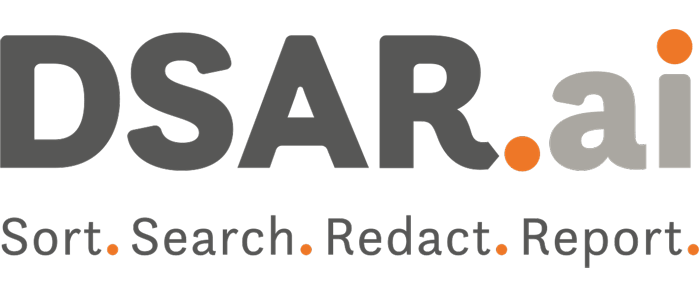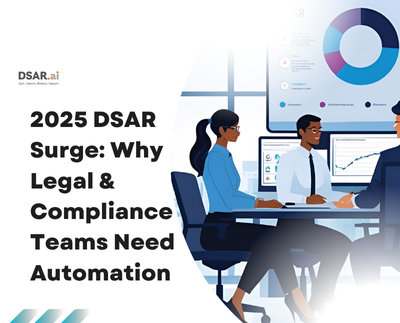2025 DSAR Surge: Why Legal & Compliance Teams Need Automation
Manual DSAR tools are no match for 2025’s compliance pressure.
As requests rise and regulatory scrutiny intensifies, relying on spreadsheets and email threads puts your team at risk. Automation delivers the speed, consistency, and audit readiness today’s privacy leaders need.
In 2024, the ICO received nearly 16,000 complaints related to DSARs.
As we move into 2025, legal and compliance teams are facing the sharpest surge yet in privacy-related requests—and the pressure to respond accurately and on time has never been higher.
But here’s the problem: many teams are still managing DSARs with manual tools—spreadsheets, email threads, and paper-based workflows. In today’s environment, that’s no longer just inefficient—it’s risky.
What’s Driving the DSAR Explosion in 2025?
1. Growing Consumer Awareness
With every privacy breach in the headlines, more individuals are becoming aware of their rights under regulations like GDPR, CCPA, and newer regional laws.
Submitting a DSAR now takes just a few clicks—tools, templates, and TikToks are teaching users how.
2. Expanding Legal Scope
Regulations such as the EU AI Act and new U.S. state laws are widening the scope of personal data access.
Companies are now processing requests not just from customers, but also from employees, partners, vendors, and global users.
3. Regulatory Scrutiny and Enforcement
Regulators are no longer passive. The Information Commissioner’s Office (ICO) and its global counterparts are issuing reprimands and fines for:
-
Missed deadlines
-
Incomplete or over-disclosed responses
-
Poor documentation
-
Inability to prove compliance
Why Manual DSAR Handling Puts You at Risk
Bottlenecks and Missed Deadlines
Manual DSAR workflows often rely on overburdened staff, lack central oversight, and are prone to task handoffs that get lost in email.
This is a recipe for non-compliance, especially when deadlines under GDPR or CCPA are 30–45 days or less.
Human Error and Inconsistent Responses
Without automated redaction or centralized guidance, different teams interpret requests differently—leading to incomplete responses, accidental disclosure, or inconsistent records.
How DSAR Automation Solves the Scaling Problem
Speed and Scalability
Automated DSAR platforms route every request through a centralized intake, assign tasks based on logic, and provide real-time tracking dashboards.
What once took weeks can now be resolved in days or even hours.
Always Audit-Ready
Every action is logged automatically—who viewed what, what was redacted, when a task was completed—creating a tamper-proof audit trail.
DSAR.ai’s Point of View: Purpose-Built for Privacy Leaders
At DSAR.ai, we designed our platform with legal and compliance teams in mind—unlike generic workflow tools or legacy solutions. Here’s what sets us apart:
End-to-end workflow automation
From intake to identity verification, data mapping, redaction, delivery, and documentation—everything is managed in a secure, GDPR-compliant system.
Customizable policy engine
Easily adapt your DSAR workflows to new laws or organizational rules—no dev team required.
Real-time compliance analytics
Stay ahead of every request with built-in dashboards, SLA tracking, and downloadable audit reports.
The Bottom Line: Automation Is No Longer Optional
2025 is the year that DSAR automation moves from “nice to have” to mission-critical.
Relying on manual effort isn’t just inefficient—it’s a direct risk to your compliance posture, your legal defensibility, and your brand reputation.
It’s time to future-proof your DSAR process.
Want to see how automation transforms your DSAR workflow?
Book a personalized demo and see how DSAR.ai reduces manual effort, improves compliance, and gives your team back control.
Book your DSAR.ai demo today
 020 8004 8625
020 8004 8625


